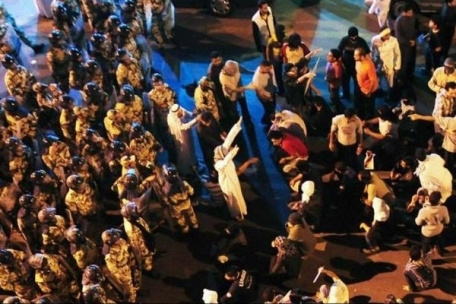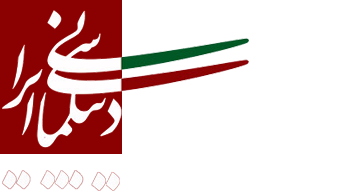The Forgotten Minority of Saudi Arabia

By: Kamran Karami
Compared with its brethren, the Shi'a community of Saudi Arabia keeps one of the lowest profiles in a Sunni-dominated country. It is not only discouraged from publicly expressing and practicing their religious beliefs, but also suffers greatly from legal and political discrimination within the country. With this short introduction inspired by the work of Graham E. Fuller, a political analyst and the author of ‘The Arab Shi'a: The Forgotten Muslims”, I attempt to dissect this group’s situation in Saudi Arabia and analyze their different scenarios.
According to Behjat Koorani, a specialist in Arab affairs, Saudi’s political structure -similar to many other current Arab states in the region- is bound to suffer from instability. This is due to the fact that the political system is based on sectarianism, and autocratic and hierarchical systems and values, which are calibrated to create discrimination against the public’s political participation, especially the country’s minorities. The current situation of the Shi’as in Saudi confirms Koorani’s speculations.
Discrimination against Shi’as has long deprived this group of their inalienable rights as citizens and has greatly limited their involvement in the country’s political, economic and social scene.
With a population roughly of 2 million, Shi’as account for 10 to 15% of Saudi Arabia’s population, mostly concentrated in the eastern region of the country which is the heart of country’s oil wealth and economy. Eastern cities like Al-Qatif have lately seen public demonstrations which have faced a strong government reaction leading to a number of deaths and injuries.
Sectarianism and discrimination is a phenomenon common to many in Saudi and anti-Shi’a movements are seen in different forms. Further, historically the Saudi Kingdom’s accountability in suppressing the Shi’as is significant.
Sectarianism in Saudi Arabia is the product of the alliance between the monarchy and the Wahhabi denomination, which has laid the foundation of the country’s ruling system. The Kingdom of Saudi Arabia was founded in 1932, soon after which oppression and marginalization of the Shi’as became standard government practice. The foundation and development of nation-state in Saudi Arabia has led to systematical oppression and debilitation of Shi’as movements within the country through a variety of tools.
Developments such as the 1979 Islamic Revolution of Iran and regime change in Iraq -which ushered in Shi’as domination over politics and marginalization of Sunnis, as well as Iran’s burgeoning influence in Afghanistan, Lebanon, Palestine -and especially Iraq- has increased the Saudis’ angst, invoking in Saudis the gloomy prospect that the regional balance is tipping away from its interests, hence their political position -both domestically and internationally- in jeopardy. Furthermore, it could prove counterproductive to the Saudi Arabia’s efforts in becoming the major political player amongst the Arab nations, as well as sustaining its influence as leader of the Muslim World. A similar shift in Bahrain explains Saudis controversial military intervention.
Shi’a political activists are deeply disagree over the status quo in Saudi Arabia. While many believe that the government has failed to meet its promises to bring a balanced condition for the country’s Shi’a minority, other Shi’as believe that coping with the status quo, which they believe has mildly improved, is preferable to taking actions that could ultimately result in more conflict. Yet the more extreme Shi’a activists have either been detained or reside outside the country. The current prevalent viewpoints of Saudi Shi’a leaders could be placed in four categories:
Withdrawal and Isolation
In principle, this is a temporary strategy until better days arrive. Considering the potential aggressiveness of the government towards Shi’as, any risky movement that could attract further suppression is to be avoided. This will require the Shi’as to further isolate themselves in their own community and if needed, seek economic aid from outside the country in order to ensure survival. This method does not prescribe any resistance unless in exceptional cases.
Proactive Resistance
Resistance implicates using all means, including violence, to impose radical changes on the political system. This requires a series of violent acts including bombing, assassinations, riots and other forms of resistance. There have been Shi’a groups that have resorted to violent acts in the past, but the general belief is that the Shi’a community is not armed well enough and it cannot use arms against the regime.
Resistance through Peaceful Means
This method requires interaction, cooperation and publicity amongst various activist groups –such as the Sunnis opposition and secular liberals- that seek fundamental change within the Saudi system. Many of these groups –including religious dissidents- have their bases outside the country.
Cooperation and Integration
This is a method widely advocated by the current Saudi reform movement, most notably Sheikh Hassan al Saffar. It promotes accepting the status quo, avoiding conflict and seeking an opening that could resuscitate dialog and negotiations. It requires integration, which will come about with the goodwill of other political parties involved, i.e. the government and the Wahhabi movement.
Based on Saudi Arabia’s status quo and the Arab Spring that has pared the country’s regional influence, any uprising by Saudi Shi’as will face severe suppression, sending them further into banishment, lingering in the hope that one day in the distant future they will be able to make their voices heard.
* Kamran Karami is head of the Persian Gulf desk in the International Peace Studies Center.


نظر شما :